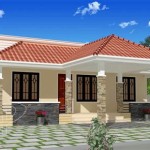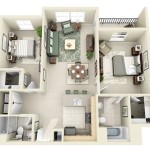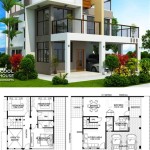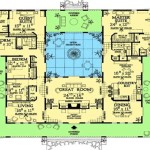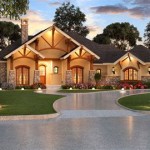Small One-Level Home Plans: A Guide to Efficient Living
As the demand for compact and efficient living spaces continues to grow, small one-level home plans are gaining popularity. These plans offer a blend of functionality and style in a manageable footprint, making them ideal for individuals, couples, or small families seeking comfortable and cost-effective housing. This comprehensive guide explores the advantages, design considerations, and practical aspects of building a small one-level home.
Advantages of Small One-Level Homes
Small one-level homes present several advantages over larger or multi-story options. These advantages include:
- Affordability: The reduced square footage translates to lower construction costs, making them a budget-friendly choice. This cost savings can be further amplified by the use of efficient materials and design elements.
- Accessibility: The absence of stairs makes these homes highly accessible for people of all ages and abilities, ensuring ease of movement and reducing the risk of falls. This accessibility feature is particularly important for individuals with mobility limitations or families with young children.
- Maintenance Simplicity: With a smaller footprint and fewer levels, maintaining a one-level home is significantly easier. Cleaning, repairs, and landscaping require less time and effort, freeing up valuable time and reducing maintenance expenses.
- Energy Efficiency: Smaller homes naturally require less energy to heat and cool, leading to lower utility bills. Strategic insulation and efficient appliances can further enhance energy efficiency.
- Minimalism and Functionality: Small one-level homes encourage a minimalist lifestyle by promoting practical and functional design solutions. This can lead to a more streamlined and uncluttered living environment.
Design Considerations for Small One-Level Homes
Creating a functional and aesthetically pleasing small one-level home requires careful planning and consideration. Here are some key design factors to keep in mind:
- Open Floor Plans: Maximizing space and creating a sense of openness are crucial in small homes. Open floor plans eliminate unnecessary walls and divisions, allowing light to flow freely and visually expanding the living area.
- Multifunctional Spaces: Incorporating multifunctional spaces is essential in small homes. For instance, a dining area can double as a home office, or a living room can be converted into a guest bedroom. This flexible approach maximizes space utilization.
- Built-in Storage: Maximizing storage opportunities is a priority in small homes. Built-in closets, cabinets, and shelves provide efficient storage solutions while minimizing visual clutter and maximizing space.
- Natural Light: Ample natural light is vital in creating a welcoming and airy ambiance in a small home. Strategic placement of windows and skylights can maximize natural light penetration, reducing reliance on artificial lighting and improving overall comfort.
- Outdoor Living Spaces: Connecting the indoor and outdoor spaces is crucial in small homes. Patios, decks, or gardens extend the living area and provide opportunities for relaxation and entertainment.
Practical Aspects of Building a Small One-Level Home
Building a small one-level home involves several practical considerations, including:
- Lot Size: The size and shape of the lot will influence the overall design and layout of the home. It is essential to assess the lot's dimensions and features to ensure the home fits appropriately and maximizes the available space.
- Building Codes: Local building codes and zoning regulations may impose restrictions on the permitted size and style of the home. It is essential to consult with local building officials before finalizing the design.
- Sustainability Features: Incorporating sustainable design features, such as energy-efficient appliances, solar panels, and rainwater harvesting systems, can enhance the environmental performance and long-term cost savings of the home.
- Interior Design: Choosing the right interior design elements is crucial in optimizing the space and creating a cohesive aesthetic. Light colors, minimal furniture, and strategic placement of mirrors can visually enlarge the space.
- Professional Guidance: Consulting with experienced architects and contractors is highly recommended to ensure a well-designed and functional home that meets your specific needs and preferences.

48 Ideas House Plans One Story Country Front Elevation For 2024 Remodelhouseplans Small Layout Floor Tiny

10 Small House Plans With Open Floor Blog Homeplans Com

Unique One Story House Plans Monster

Best One Story House Plans And Ranch Style Designs
10 Small House Plans With Open Floor Blog Homeplans Com

One Story Style With 1 Bed Bath Contemporary House Plans Small Floor Tiny

18 Small House Designs With Floor Plans And Decors

1 Bedroom Apartment House Plans

Plan 73931 Detached Guest House Or Tiny With Photos

Looking For A Single Y House Check Out These Plans Ulric Home

